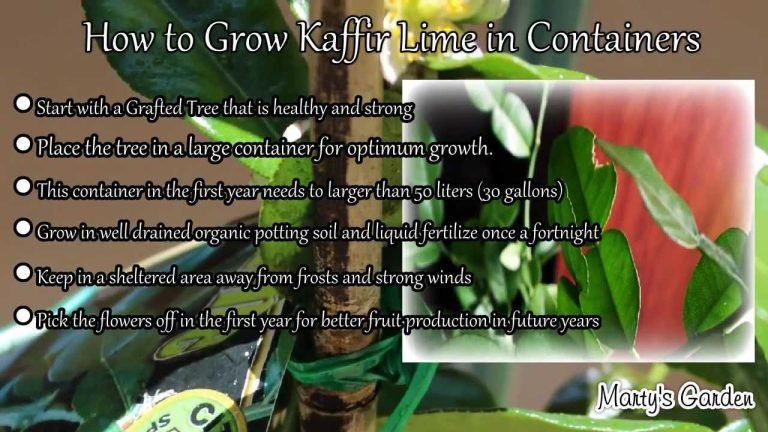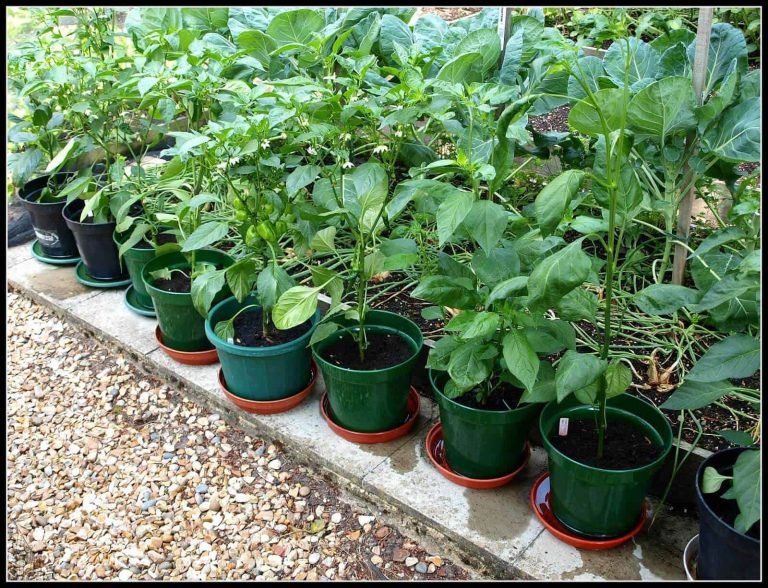how to grow heirloom tomatoes in a pot – [Beginners Guide]
Are you a fan of juicy, flavorful tomatoes that taste like they used to? Then growing heirloom tomatoes in pots might be just what you need! I’ve been growing heirloom tomatoes at home for the past few years and let me tell you, the experience has been nothing short of amazing.
Not only does it give me a sense of pride to grow my own food, but the convenience of having fresh tomatoes at my fingertips is unbeatable. Plus, growing heirloom tomatoes in pots is a great way to save space and bring life to your outdoor or indoor space.
Did you know? Heirloom tomatoes come in a variety of shapes, sizes, and colors and are usually more flavorful and aromatic than their hybrid counterparts. Plus, growing heirloom tomatoes in pots allows for better soil control and less chance of disease and pests compared to growing them in the ground.
Whether you’re a seasoned gardener or a first-time grower, growing heirloom tomatoes in pots is a fun and rewarding hobby. So why not give it a try and see what delicious creations you can come up with?
Pot or container selection
When it comes to growing heirloom tomatoes at home, the right pot can make all the difference.
Size and Capacity: A pot with a minimum size of 12-14 inches in diameter and depth is ideal for one tomato plant. If you plan to grow more than one plant, make sure to have a pot big enough to accommodate them, with adequate space between each plant for proper growth.
Construction: Opt for a pot made of materials that can regulate soil temperature, such as terracotta or plastic. It is also important to choose a pot with proper drainage holes to prevent waterlogging, which can lead to root rot.
In addition, consider getting a pot with a sturdy bottom and strong walls, as tomato plants can grow quite tall and heavy. A pot with a saucer or tray to catch excess water is also a great idea to prevent water damage to your surfaces.
By selecting the right size and type of pot, you can ensure optimal growth and health of your heirloom tomato plants. Happy planting!
Make suitable soil mix
Soil is one of the most important factors in growing heirloom tomatoes, so it’s essential to choose the right mix for your plants.
Type: Look for a high-quality, well-draining potting mix specifically formulated for tomatoes or vegetables. Avoid using garden soil as it may be too heavy and can retain too much moisture.
Mixture: To enhance the soil mix, consider adding compost, peat moss, or other organic matter to improve soil structure and fertility. This will provide your plants with essential nutrients for growth and fruiting.
It’s also important to regularly monitor the pH level of your soil, as tomatoes prefer a slightly acidic soil with a pH range between 6.0-6.8. You can adjust the soil pH with products like sulfur or lime if needed.
Note: It’s crucial to maintain the right soil moisture levels to avoid over-watering or under-watering, which can affect the health and productivity of your plants.
By paying attention to soil mix, you can ensure optimal growth and abundant harvests of delicious heirloom tomatoes!
How to plant the heirloom tomatoes?
Growing heirloom tomatoes in pots at home is a simple and rewarding process that can be done in just a few easy steps. Follow these guidelines for the best results:
- Choose the right pot: Select a pot with adequate size and proper construction as discussed earlier in this article.
- Prepare the soil mix: Fill the pot with high-quality, well-draining potting soil and add organic matter if desired. Make sure to moisten the soil before planting.
- Plant the seedlings: Remove the seedling from its container and gently loosen any tangled roots. Place the seedling in the center of the pot, being careful not to damage the stem. Fill the pot with soil, gently tamping it down to eliminate air pockets and make sure the seedling is firmly planted.
- Water and mulch: Water the seedling well and place a layer of mulch on top of the soil to retain moisture and suppress weed growth. Keep the soil moist, but not waterlogged.
- Provide support: As the plant grows, provide it with a sturdy support like a tomato cage or stake to prevent the stem from breaking under the weight of the fruit.
- Fertilize: Fertilize your plants regularly with a balanced, tomato-specific fertilizer to encourage growth and fruiting.
- Enjoy the harvest: With proper care, you should be able to harvest ripe, delicious heirloom tomatoes in about 70-90 days after planting. Enjoy the fruits of your labor!
By following these steps, you can successfully grow heirloom tomatoes in pots at home and enjoy fresh, flavorful tomatoes all season long!
How to care for heirloom tomatoes?
Caring for Heirloom Tomatoes in a Pot
Watering Requirement
- Water the plant deeply and regularly, at least once a week, or more frequently in hot weather.
- Allow the soil to dry slightly between waterings, but avoid letting it become completely dry.
- Tomatoes are prone to developing blossom end rot, which is often caused by uneven watering.
Fertilizer Requirement
- Fertilize heirloom tomatoes every two weeks with a balanced, water-soluble fertilizer.
- Stop fertilizing about two months after planting to avoid encouraging late-season growth that will be vulnerable to frost.
- Consider adding compost to the soil at the time of planting, for a boost of organic matter and nutrients.
Sunlight Needs
- Heirloom tomatoes require full sun, at least 6 hours a day.
- If grown indoors, place the pot near a sunny window, or use grow lights to supplement natural light.
Pruning & Training
- Pinch off the suckers that grow in the crotches between branches and the main stem.
- Stake or cage the plant to provide support as it grows and to keep the fruit off the ground.
- Prune away any yellow or diseased leaves to improve air circulation and reduce disease problems.
Other Care
- Plant heirloom tomatoes in a pot that is at least 12 inches deep and 18 inches wide, with well-draining soil.
- Ensure that the pot has adequate drainage holes to prevent water from standing in the bottom.
- Avoid getting water on the foliage when watering, as this can promote fungal diseases.
With proper care and attention, heirloom tomatoes grown in a pot can thrive and produce an abundant harvest of flavorful fruit.
Common problems
Pests and Insects
Heirloom tomatoes grown in pots are susceptible to a variety of pests and insects, including aphids, whiteflies, and spider mites. These pests can cause damage to the leaves and stems of the plant, reducing the plant’s ability to photosynthesize and produce fruit. To prevent pest problems, it’s important to regularly inspect the plants for signs of infestation and to take appropriate control measures, such as using insecticidal soap or releasing beneficial insects, such as ladybugs, into the garden.
Diseases
Heirloom tomatoes are also vulnerable to a number of diseases, including early and late blight, septoria leaf spot, and powdery mildew. These diseases can weaken the plant, reduce yields, and even kill the plant if left unchecked. To prevent disease problems, it’s important to practice good cultural techniques, such as avoiding overhead watering, rotating crops, and removing infected plant parts promptly.
Poor Production
Poor production of heirloom tomatoes can be caused by a number of factors, including improper planting, lack of adequate sunlight, over- or under-watering, and nutrient deficiencies. To ensure healthy and productive plants, it’s important to follow proper planting guidelines, provide adequate light, water, and nutrients, and to maintain proper soil moisture levels. Additionally, it’s important to regularly prune the plants to remove any dead or diseased growth and to allow for maximum sun exposure and air circulation.
Other Issues
In addition to pests, diseases, and poor production, heirloom tomatoes grown in pots may also face other issues, such as uneven ripening, cracking, or blossom end rot. These problems can be caused by fluctuations in soil moisture levels, temperature, or light exposure. To prevent these issues, it’s important to provide consistent care and to monitor the plants regularly to catch and address any problems early on.
In conclusion, heirloom tomatoes grown in pots can face a variety of challenges, including pests, diseases, poor production, and other issues. To ensure successful growth and productive plants, it’s important to follow proper planting guidelines, provide adequate light, water, and nutrients, and to monitor the plants regularly for any signs of problems. With the right care, heirloom tomatoes can be a rewarding and delicious addition to a home garden.
Harvesting & storing homegrown heirloom tomatoes
Harvesting Heirloom Tomatoes
Heirloom tomatoes are best harvested when they are fully ripe and have developed their full flavor and color. To determine if a tomato is ready to be harvested, look for signs such as a deep, even color and a slightly soft texture when gently squeezed. The stem should also separate easily from the plant when the tomato is gently pulled.
Steps for Harvesting and Storing Heirloom Tomatoes
- Harvest tomatoes with a sharp, clean pair of scissors or pruning shears, cutting the stem close to the fruit to avoid damaging the plant.
- Handle the tomatoes gently to avoid bruising, which can shorten their storage life.
- Sort the tomatoes by ripeness, storing fully ripe tomatoes separately from those that are not yet fully ripe.
- Store fully ripe tomatoes at room temperature, out of direct sunlight, and away from any sources of ethylene, such as ripe bananas or apples, to extend their shelf life.
- To ripen tomatoes that are not yet fully ripe, place them in a paper bag with an apple or banana, which will release ethylene and hasten the ripening process.
- Store unripe tomatoes in a cool, dark place, such as a pantry or root cellar, and check them regularly to ensure that they do not overripen or spoil.
Final Thoughts
Harvesting and storing homegrown heirloom tomatoes is a simple process that can help to extend the life and enjoyment of these delicious fruits. By following these steps and monitoring the tomatoes regularly, it’s possible to enjoy the full flavor and color of heirloom tomatoes for many weeks after they have been harvested.
Growing heirloom tomatoes in container – Conclusion
Conclusion
Growing heirloom tomatoes in a pot is a great way to enjoy fresh, homegrown tomatoes even if you have limited outdoor space. By following the steps outlined in this guide, including choosing the right pot, soil, and plants, providing adequate sunlight and water, and monitoring for pests and diseases, you can grow healthy and productive tomato plants in your home garden.
Benefits of Growing Heirloom Tomatoes
- Enjoy fresh, flavorful tomatoes right from your own garden
- Save money on grocery bills by growing your own produce
- Have control over the growing conditions and use of pesticides
- Try new and unique varieties of heirloom tomatoes not commonly found at the grocery store
Encouragement
So why not give it a try? Whether you’re a seasoned gardener or a beginner, growing heirloom tomatoes in a pot is a fun and rewarding project that can provide you with fresh, delicious produce all season long. With a little patience, care, and attention, you can grow a thriving tomato garden that you can be proud of.
In conclusion, growing heirloom tomatoes in a pot is a simple and fulfilling way to add fresh, flavorful produce to your diet. With the right conditions, care, and monitoring, you can grow healthy, productive tomato plants that will provide you with delicious, fresh tomatoes all season long.






